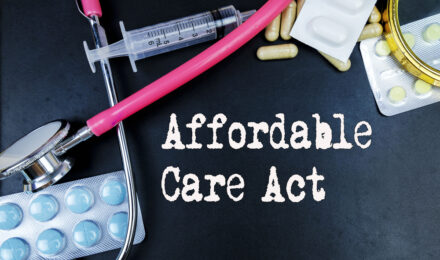Contents
- 1 SNAP Benefits and Origins: A Program Built in Crisis
- 2 Do You Qualify? Let’s Break It Down
- 3 The Application Process: Less Painful Than You Think
- 4 Who Gets Left Out? The Fine Print
- 5 EBT: Your Digital Wallet for Food Assistance
- 6 How Much Will You Get? Let’s Do the Math
- 7 What’s on the Shopping List? And What’s Off-Limits?
- 8 The Bigger Picture: Why SNAP Matters More Than Ever
- 9 Citations
Hunger isn’t just an abstract issue—it’s a relentless force that millions of Americans battle every single day. The Supplemental Nutrition Assistance Program (SNAP) isn’t just financial assistance; it’s a vital safety net, ensuring people can afford the most fundamental human necessity—food.
Yet, for many, navigating government programs feels like wading through an endless maze of paperwork and bureaucracy. Who qualifies? How does the process work? And most importantly, how do you make the most of the benefits available? Let’s break it all down.
SNAP Benefits and Origins: A Program Built in Crisis
Picture the United States in 1939—farmers struggling with massive crop surpluses, families scraping by on whatever they can afford, and the nation still recovering from the Great Depression’s iron grip. Enter the Food Stamp Program, a radical idea designed to solve two problems at once: give struggling Americans access to food while stabilizing farm prices.
It worked. Decades of reforms and legislative overhauls later, SNAP emerged as the modern version of this life-sustaining initiative. Today, it serves more than 41 million people. But here’s the shocking part—millions more who qualify never apply. Misinformation, stigma, and sheer frustration with government processes keep them away. The reality? Applying is simpler than most people think.
Do You Qualify? Let’s Break It Down
SNAP eligibility revolves around income and household assets. To determine whether someone qualifies, the government looks at two key financial figures:
- Gross Income: This is your total earnings before deductions. To qualify, your gross income must be below 130% of the federal poverty line for your household size.
- Net Income: After taxes, rent, childcare, and other essential expenses are deducted, your remaining income must be below 100% of the poverty line.
Assets—such as savings, investments, and even certain vehicles—also play a role. However, households with elderly or disabled members often qualify under special exemptions.
And here’s a little-known fact: You don’t need a permanent address to apply. Whether you’re staying with a friend, in a shelter, or even moving from place to place, you can still receive benefits. Food security doesn’t require a fixed zip code.
The Application Process: Less Painful Than You Think
Government paperwork has a reputation for being tedious, but applying for SNAP doesn’t have to be a nightmare. The process starts with contacting your state’s SNAP office, since each state manages its own version of the program. You can apply in one of three ways:
- Visit a local SNAP office in person.
- Apply online through your state’s official website.
- Call the toll-free SNAP hotline for guidance.
Once submitted, most applications are processed within 30 days. But here’s something not everyone knows—some households qualify for expedited approval and can get benefits in as little as seven days. If your household has less than $100 in cash or bank funds or earns under $150 a month, your case is prioritized. The program is built to ensure that those in urgent need don’t have to wait.
Who Gets Left Out? The Fine Print
Not everyone qualifies, even if their income falls within the right range. If you’re on strike, undocumented, or an able-bodied adult without dependents (ABAWD) who isn’t working, your benefits may be severely limited. Most ABAWDs can only receive three months of benefits every three years unless they meet specific work requirements. It’s a controversial policy, but for now, it remains in place.
EBT: Your Digital Wallet for Food Assistance
If you’re approved, your benefits are loaded onto an Electronic Benefits Transfer (EBT) card, which works like a debit card at approved grocery stores and retailers nationwide. Each month, your balance refreshes, giving you a designated grocery budget.
But here’s the catch—SNAP assumes you’ll spend at least 30% of your net income on food. The lower your income, the more assistance you receive to help bridge the gap.
How Much Will You Get? Let’s Do the Math
The government follows a simple formula:
- Take your net income and multiply it by 0.3 (since SNAP assumes you’ll contribute 30% of your income toward food).
- Subtract that amount from the maximum monthly SNAP benefit for your household size.
- What’s left is your SNAP allotment.
This means that households with lower income receive more assistance, ensuring they can meet basic grocery needs.
What’s on the Shopping List? And What’s Off-Limits?
SNAP isn’t about luxury—it’s about ensuring people have access to essential, nutritious foods. Here’s what you can buy:
- Fresh fruits and vegetables
- Dairy products and eggs
- Bread, grains, and pasta
- Meat, poultry, and seafood
- Non-alcoholic beverages and pantry staples
- Seeds and plants (for growing your own food)
However, there are strict restrictions on what SNAP cannot cover:
- Alcohol, tobacco, or vaping products
- Vitamins, supplements, or medicine
- Hot, prepared meals from restaurants
- Household essentials like soap, pet food, or paper products
The program is designed to prioritize nutrition and prevent misuse.
The Bigger Picture: Why SNAP Matters More Than Ever
SNAP isn’t just another government program—it’s a pillar of food security that keeps millions of families from going hungry. Yet, despite its importance, it’s constantly under political scrutiny. Some policymakers push for stricter eligibility requirements, while others advocate for expanded access to ensure that no one falls through the cracks.
So, where does it go from here? Will SNAP evolve into a stronger, more inclusive program? Or will funding cuts and tighter restrictions make it harder for families to access food? The fight over food assistance isn’t just about dollars—it’s about dignity, stability, and the fundamental right to not go hungry.
And here’s the bottom line: if you think you might qualify, apply. The worst that can happen? A denial. But the best? A lifeline that ensures you and your loved ones never have to choose between rent and food again.
Citations
- U.S. Department of Agriculture. “Supplemental Nutrition Assistance Program (SNAP) Facts.” www.usda.gov.
- Center on Budget and Policy Priorities. “A Closer Look at SNAP: Who Benefits and How?” www.cbpp.org.
- National Conference of State Legislatures. “SNAP Eligibility and Benefit Calculation Rules.” www.ncsl.org.
Contents
- 1 SNAP Benefits and Origins: A Program Built in Crisis
- 2 Do You Qualify? Let’s Break It Down
- 3 The Application Process: Less Painful Than You Think
- 4 Who Gets Left Out? The Fine Print
- 5 EBT: Your Digital Wallet for Food Assistance
- 6 How Much Will You Get? Let’s Do the Math
- 7 What’s on the Shopping List? And What’s Off-Limits?
- 8 The Bigger Picture: Why SNAP Matters More Than Ever
- 9 Citations
Hunger isn’t just an abstract issue—it’s a relentless force that millions of Americans battle every single day. The Supplemental Nutrition Assistance Program (SNAP) isn’t just financial assistance; it’s a vital safety net, ensuring people can afford the most fundamental human necessity—food.
Yet, for many, navigating government programs feels like wading through an endless maze of paperwork and bureaucracy. Who qualifies? How does the process work? And most importantly, how do you make the most of the benefits available? Let’s break it all down.
SNAP Benefits and Origins: A Program Built in Crisis
Picture the United States in 1939—farmers struggling with massive crop surpluses, families scraping by on whatever they can afford, and the nation still recovering from the Great Depression’s iron grip. Enter the Food Stamp Program, a radical idea designed to solve two problems at once: give struggling Americans access to food while stabilizing farm prices.
It worked. Decades of reforms and legislative overhauls later, SNAP emerged as the modern version of this life-sustaining initiative. Today, it serves more than 41 million people. But here’s the shocking part—millions more who qualify never apply. Misinformation, stigma, and sheer frustration with government processes keep them away. The reality? Applying is simpler than most people think.
Do You Qualify? Let’s Break It Down
SNAP eligibility revolves around income and household assets. To determine whether someone qualifies, the government looks at two key financial figures:
- Gross Income: This is your total earnings before deductions. To qualify, your gross income must be below 130% of the federal poverty line for your household size.
- Net Income: After taxes, rent, childcare, and other essential expenses are deducted, your remaining income must be below 100% of the poverty line.
Assets—such as savings, investments, and even certain vehicles—also play a role. However, households with elderly or disabled members often qualify under special exemptions.
And here’s a little-known fact: You don’t need a permanent address to apply. Whether you’re staying with a friend, in a shelter, or even moving from place to place, you can still receive benefits. Food security doesn’t require a fixed zip code.
The Application Process: Less Painful Than You Think
Government paperwork has a reputation for being tedious, but applying for SNAP doesn’t have to be a nightmare. The process starts with contacting your state’s SNAP office, since each state manages its own version of the program. You can apply in one of three ways:
- Visit a local SNAP office in person.
- Apply online through your state’s official website.
- Call the toll-free SNAP hotline for guidance.
Once submitted, most applications are processed within 30 days. But here’s something not everyone knows—some households qualify for expedited approval and can get benefits in as little as seven days. If your household has less than $100 in cash or bank funds or earns under $150 a month, your case is prioritized. The program is built to ensure that those in urgent need don’t have to wait.
Who Gets Left Out? The Fine Print
Not everyone qualifies, even if their income falls within the right range. If you’re on strike, undocumented, or an able-bodied adult without dependents (ABAWD) who isn’t working, your benefits may be severely limited. Most ABAWDs can only receive three months of benefits every three years unless they meet specific work requirements. It’s a controversial policy, but for now, it remains in place.
EBT: Your Digital Wallet for Food Assistance
If you’re approved, your benefits are loaded onto an Electronic Benefits Transfer (EBT) card, which works like a debit card at approved grocery stores and retailers nationwide. Each month, your balance refreshes, giving you a designated grocery budget.
But here’s the catch—SNAP assumes you’ll spend at least 30% of your net income on food. The lower your income, the more assistance you receive to help bridge the gap.
How Much Will You Get? Let’s Do the Math
The government follows a simple formula:
- Take your net income and multiply it by 0.3 (since SNAP assumes you’ll contribute 30% of your income toward food).
- Subtract that amount from the maximum monthly SNAP benefit for your household size.
- What’s left is your SNAP allotment.
This means that households with lower income receive more assistance, ensuring they can meet basic grocery needs.
What’s on the Shopping List? And What’s Off-Limits?
SNAP isn’t about luxury—it’s about ensuring people have access to essential, nutritious foods. Here’s what you can buy:
- Fresh fruits and vegetables
- Dairy products and eggs
- Bread, grains, and pasta
- Meat, poultry, and seafood
- Non-alcoholic beverages and pantry staples
- Seeds and plants (for growing your own food)
However, there are strict restrictions on what SNAP cannot cover:
- Alcohol, tobacco, or vaping products
- Vitamins, supplements, or medicine
- Hot, prepared meals from restaurants
- Household essentials like soap, pet food, or paper products
The program is designed to prioritize nutrition and prevent misuse.
The Bigger Picture: Why SNAP Matters More Than Ever
SNAP isn’t just another government program—it’s a pillar of food security that keeps millions of families from going hungry. Yet, despite its importance, it’s constantly under political scrutiny. Some policymakers push for stricter eligibility requirements, while others advocate for expanded access to ensure that no one falls through the cracks.
So, where does it go from here? Will SNAP evolve into a stronger, more inclusive program? Or will funding cuts and tighter restrictions make it harder for families to access food? The fight over food assistance isn’t just about dollars—it’s about dignity, stability, and the fundamental right to not go hungry.
And here’s the bottom line: if you think you might qualify, apply. The worst that can happen? A denial. But the best? A lifeline that ensures you and your loved ones never have to choose between rent and food again.
Citations
- U.S. Department of Agriculture. “Supplemental Nutrition Assistance Program (SNAP) Facts.” www.usda.gov.
- Center on Budget and Policy Priorities. “A Closer Look at SNAP: Who Benefits and How?” www.cbpp.org.
- National Conference of State Legislatures. “SNAP Eligibility and Benefit Calculation Rules.” www.ncsl.org.






